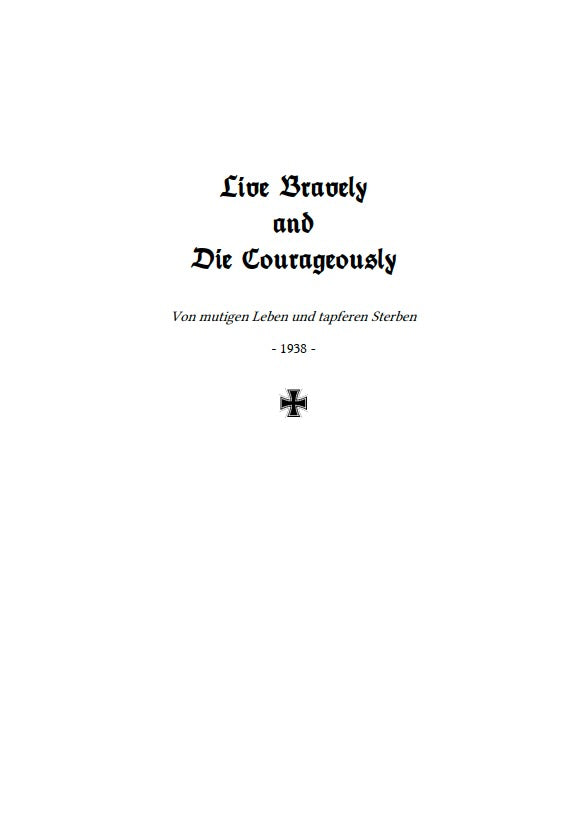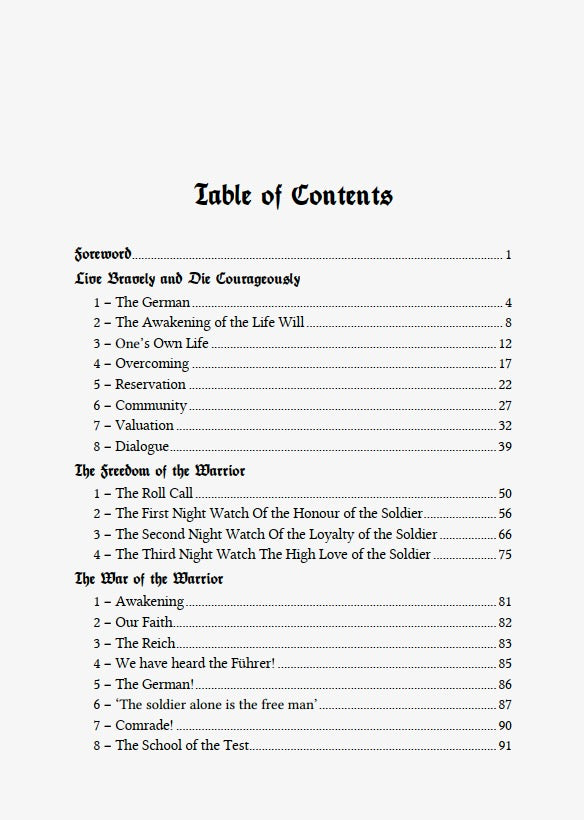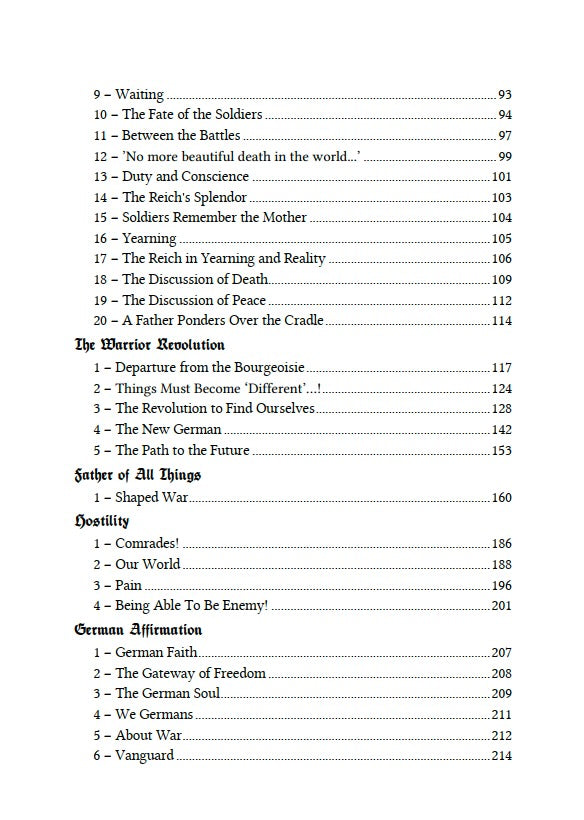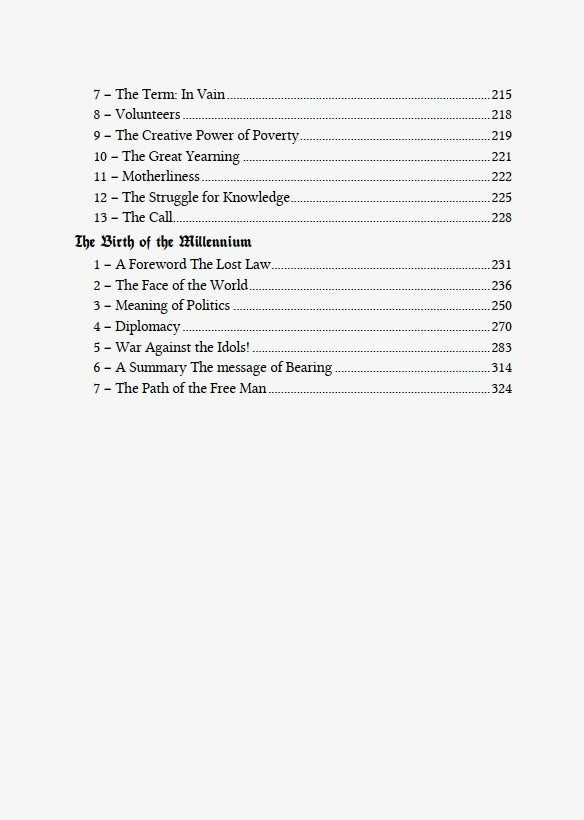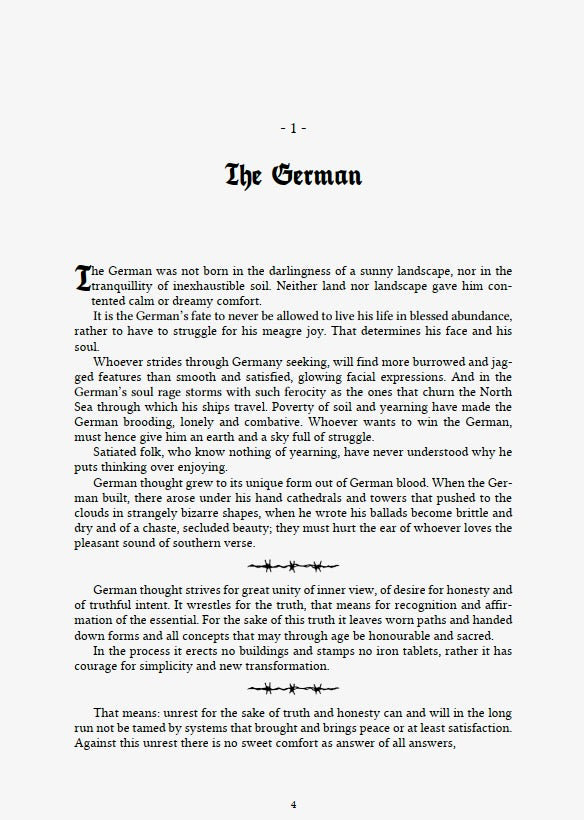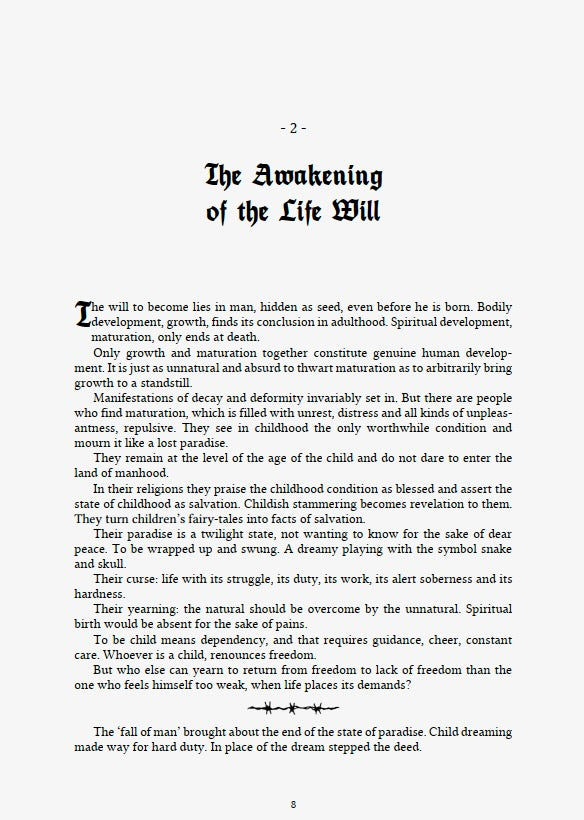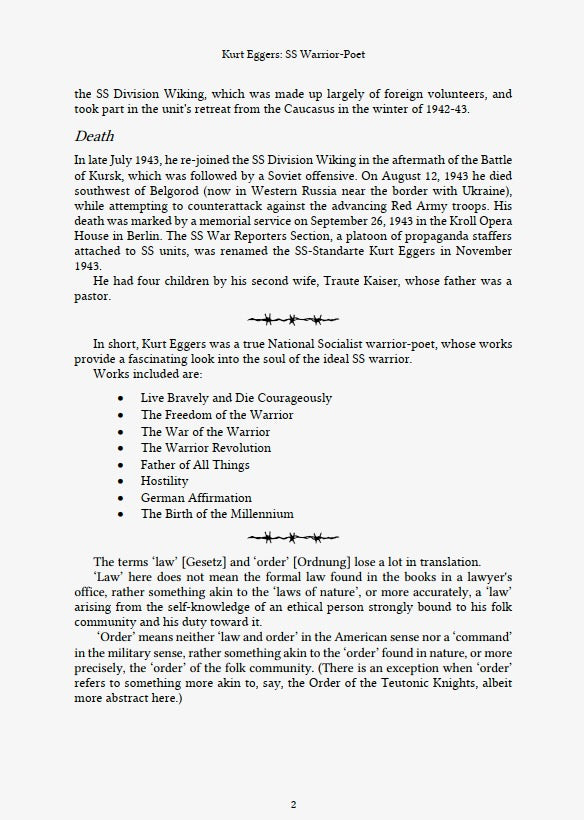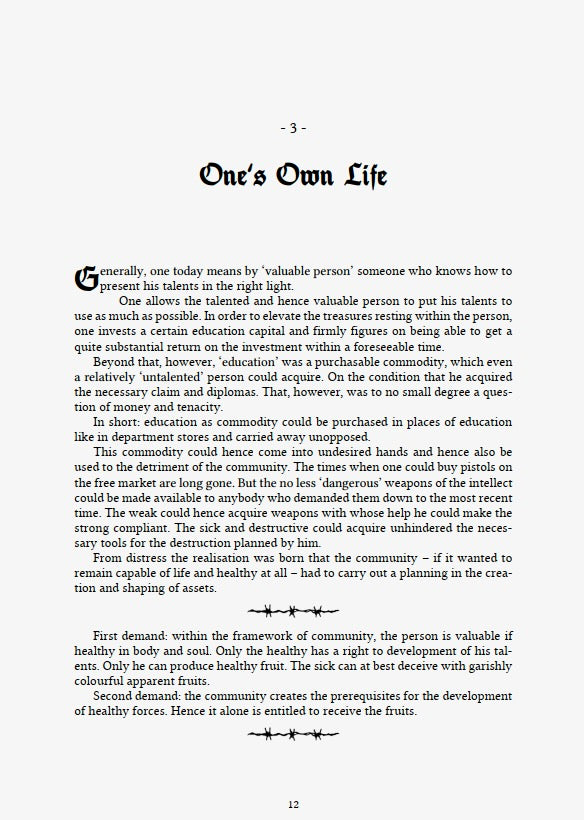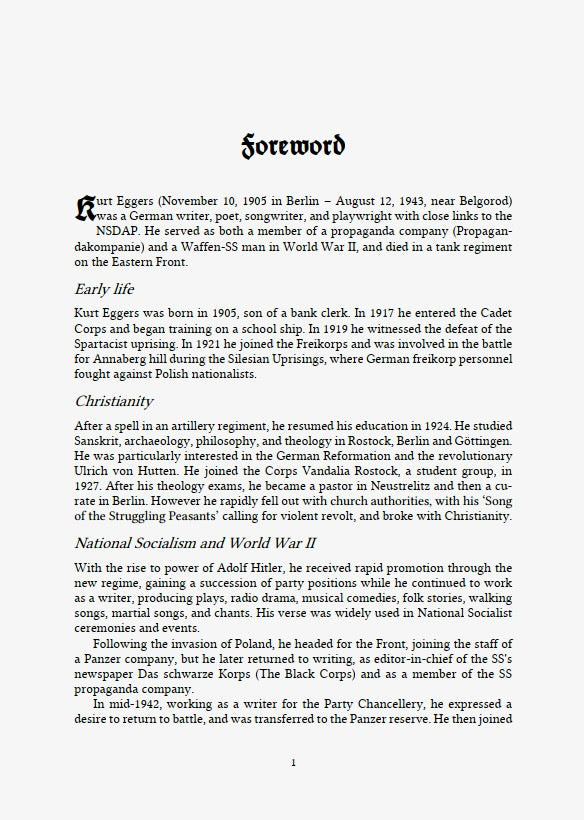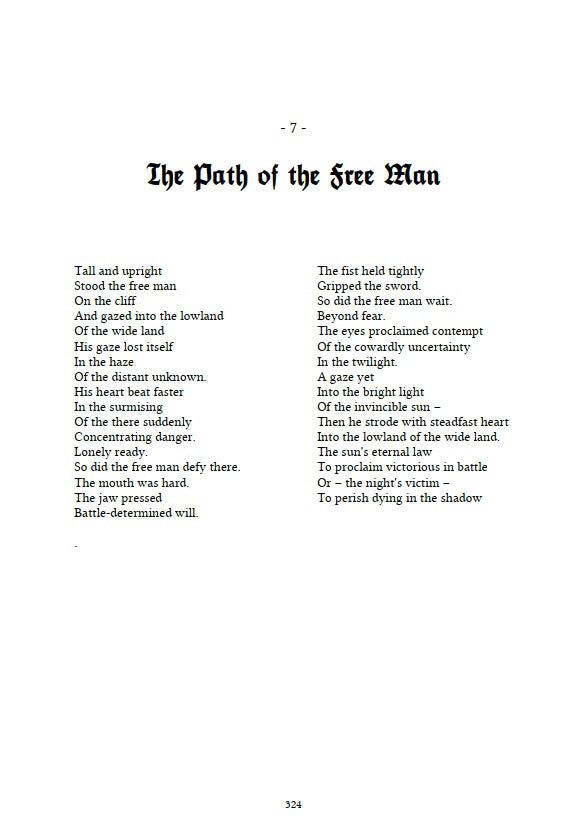Obscure Books
Kurt Eggers, the SS Warrior-Poet: Collected Writings
Kurt Eggers, the SS Warrior-Poet: Collected Writings
Couldn't load pickup availability
2018 edition printed in 2025. 6" x 9". 331 pages.
This is a FACSIMILE REPRINT of an exceedingly difficult book to find.
Please allow 2-3 weeks for book to be delivered.
[Note: This is NOT an original version from 2018.]
Kurt Eggers, the SS Warrior-Poet: Collected Writings
Kurt Eggers was the editor of the SS newspaper Das Schwarze Korps and an SS war correspondent. After he was killed on the Russian front in 1943, an SS regiment was named after him: the SS-Standarte Kurt Eggers. In short, Kurt Eggers was a true National Socialist warrior-poet, whose works provide a fascinating look into the soul of the ideal SS warrior.
Eggers was born in 1905, the son of a bank clerk. In 1917 he entered the Cadet Corps and began training on a school ship. In 1919 he witnessed the defeat of the Spartacist uprising. In 1921 he joined the Freikorps and was involved in the battle for Annaberg hill, where German freikorp personnel fought against Polish nationalists.
With the rise to power of Adolf Hitler, he received rapid promotion through the new regime, gaining a succession of party positions while he continued to work as a writer, producing plays, radio drama, musical comedies, folk stories, walking songs, martial songs, and chants. His verse was widely used in NSDAP ceremonies and events.
Following the invasion of Poland, he headed for the Front, joining the staff of a Panzer company, but he later returned to writing, as editor-in-chief of the SS's newspaper Das schwarze Korps (The Black Corps) and as a war correspondent.
In mid-1942, working as a writer for the Party Chancellery, he expressed a desire to return to battle, and was transferred to the Panzer reserve. He then joined the 5th SS Panzer Division "Wiking", which was made up largely of foreign volunteers, and became involved in their withdrawal from the Caucasus in the winter of 1942-43.
In late July 1943, he rejoined the Viking Division; the German Kursk offensive was grinding to a halt and the Russians were driving them back. On August 12, 1943 he died southwest of Belgorod (now in Western Russia near the border with Ukraine), while attempting to counterattack against the advancing Russians. His death was marked by a memorial service on September 26, 1943 in the Kroll Opera House in Berlin. The SS War Reporters Section, a platoon of war correspondents attached to SS units, was renamed the SS-Standarte Kurt Eggers in a ceremony in November 1943.
He had four children by his second wife, Traute Kaiser, whose father was a pastor.
The SS-Standarte Kurt Eggers was a German Waffen SS combat war correspondent formation which reported on the actions of all Waffen SS combat formations, seeing action in all major theatres of war with the exception of North Africa. The "Berichter" (literally: reporters) of the Standarte were expected to fight actively, if the situation demanded it. They were fully trained and well-equipped.
As the number of SS combat-formations increased, so did the number of “Kriegsberichter” (war correspondents) that were required. In December 1943, the unit reached regimental size and received the name SS-Standarte Kurt Eggers. The honorary title Kurt Eggers referred to the SS war-correspondent and editor of the SS magazine Das Schwarze Korps who had been killed earlier in the year, while reporting on the Wiking's battles near Kharkov. In 1944 the Standarte was 1,180 men strong. Commander of the SS-Standarte Kurt Eggers was SS-Standartenführer Gunter d'Alquen, the "mouthpiece of revolutionary National Socialism and chief spokesman of the SS in the German press.
Share

